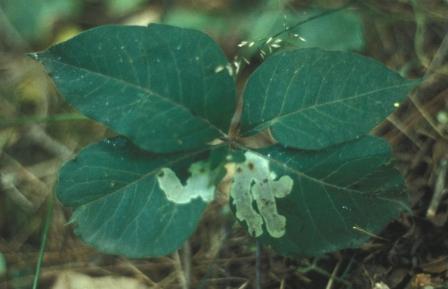by Carl Strang
The dramatic departure of the Mesozoic Era and its dinosaurs (as well as a large proportion of other life forms) opened an immense volume of ecological space which was filled by mammals, birds and other diversifying descendants of the survivors. The following are notes from some of last year’s published studies of those early post-Mesozoic epochs.
Blonder, B., et al. 2014. Plant ecological strategies shift across the Cretaceous–Paleogene boundary. PLoS Biol 12(9): e1001949. doi:10.1371/journal.pbio.1001949
Chase, J.M. 2014. A plant’s guide to surviving the Chicxulub impact. PLoS Biol 12(9): e1001948. doi:10.1371/journal.pbio.1001948 This study (interpreted in the Chase paper) found that slow-growing evergreen plants were selected against by the “impact winter” effects of the end-Cretaceous impact event. Plant species with faster growth, cheaper expendable leaves, and thus a quick response to changing and fluctuating conditions, had an advantage and better survival.

The following study suggests that all leaf miners, at least in half the continent, went extinct with the end of the Cretaceous. And yes, that is a poison ivy leaf with 4 leaflets.
Carvalho, Mónica R., et al. 2014. Insect leaf-chewing damage tracks herbivore richness in modern and ancient forests. PLoS ONE 9 (5): e94950. DOI: 10.1371/journal.pone.0094950 They looked at fossil leaf mines, and concluded that all miners went extinct in western North America with the end of the Cretaceous. Newly evolved leaf mining species appeared within 1 million years.
Wilf, Peter, and Ignacio H. Escapa. 2014. Green web or megabiased clock? Plant fossils from Gondwanan Patagonia speak on evolutionary radiations. New Phytologist DOI: 10.1111/nph.13114 They examined a new array of plant fossils and found them to be significantly older than molecular clock studies had indicated they would be. This result points to a need to reconsider molecular dating. It also supports the idea that plants dispersed among the southern continents by continental drift more than by rafting, which had been supported by the younger ages of evolutionary diversification suggested by the molecular dating.
Solé, F., et al. 2014. Dental and tarsal anatomy of ‘miacis’ Latouri and a phylogenetic analysis of the earliest carnivoraforms (mammalia, Carnivoramorpha). Journal of Vertebrate Paleontology, 34(1): 1-21. As described in a ScienceDaily article. They studied fossils (teeth and ankle bones) of a European mammal, Dormaalcyon latouri, from the early Eocene of Belgium, and concluded it is a basal carnivore. It appears to have been arboreal, which implies a continuous forest connecting Eurasia with North America at the time which provided a corridor for carnivore immigration to North America (the age and location suggests that carnivores first evolved in Europe). At the same time it is derived enough to imply that there were early carnivores in the late Paleocene as well.
Rose, Kenneth D., et al. 2014. Early Eocene fossils suggest that the mammalian order Perissodactyla originated in India. Nature Communications 5: 5570 DOI: 10.1038/ncomms6570 As described in a ScienceDaily article. They found fossils bridging Perissodactyla with earlier mammalian groups, from around 56 million years ago, when India still was an island drifting toward Asia. This suggests that the group originated there during that period of isolation. It has been speculated that primates likewise started there, though that has yet to be determined.
Mayr, G., and V. Wilde. 2014. Eocene fossil is earliest evidence of flower-visiting by birds. Biology Letters 10 (5): 20140223. DOI: 10.1098/rsbl.2014.0223 As described in a ScienceDaily article. They describe a 47-million-year-old fossil bird with stomach contents dominated by diverse pollens, and with anatomy consistent with nectar feeding, and conclude that this is the oldest known bird species that visited flowers.
threepointeightbillionyears.com said,
March 16, 2015 at 8:09 am
I’m not in the field and couldn’t follow all the terminology but I read the last article–flower visiting–and found it interesting. Enjoyed reading about what they looked at and looked for in the fossil.